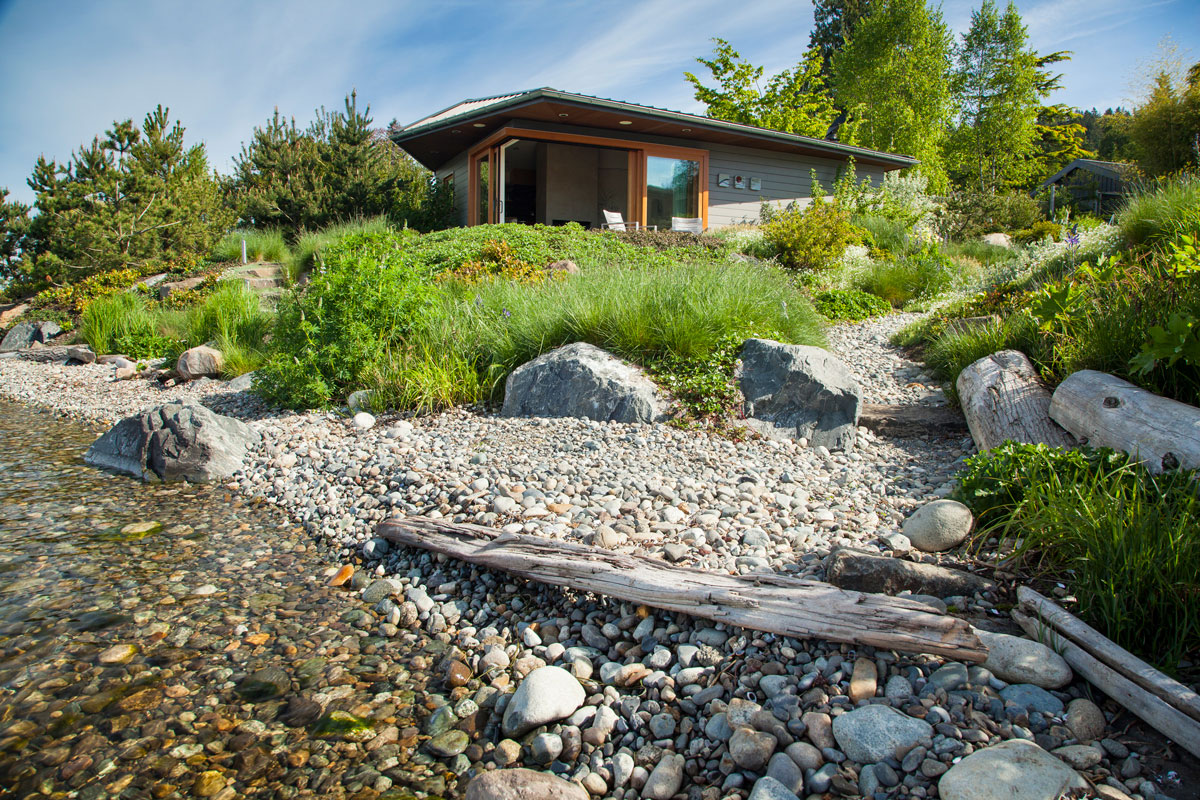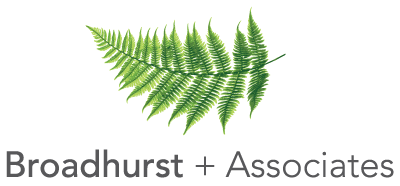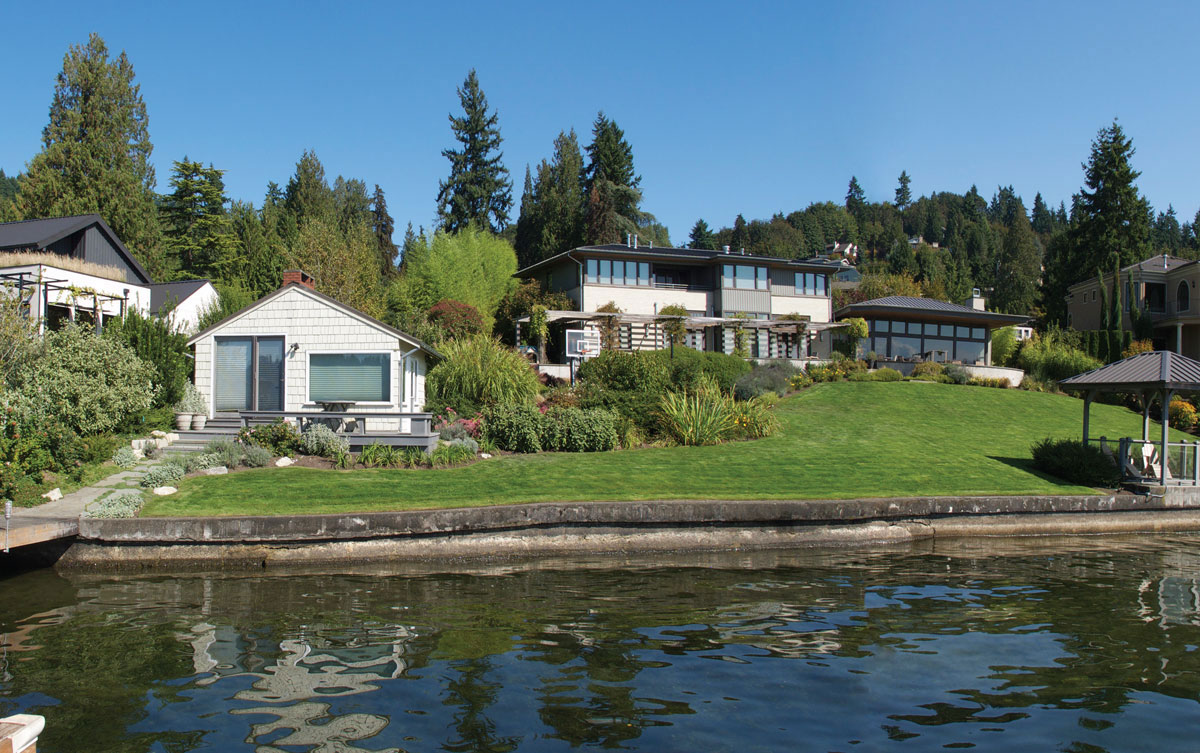

A Living Shoreline in Lake Washington
How a lakefront home’s shoreline was restored to make a home for wildlife, too.
AUTHOR: Valerie Easton | May 2016 | THE SEATTLE TIMES
He asked himself, “How can a suburban piece of property transcend its boundaries and connect to its surroundings?” One piece of the puzzle was getting rid of lawn and bulkhead and restoring the shoreline’s ecology, a challenge that for Broadhurst lent resonance to the project.
The owners of the property were influenced by how the Seattle Art Museum’s Olympic Sculpture Park flows down to a restored saltwater beach. When they heard an ecologist talk about the benefits of removing bulkheads and creating beaches for birds and sea life, they were inspired to work with nature rather than against her.
But they were looking at 150 feet of bulkhead. Not only was the concrete edge stark and unattractive; it also severed the connection between the land and water, discouraged wildlife and created a steep drop-off. And erosion often occurs behind bulkheads. Broadhurst’s determination to create a living shoreline with a gentle slope from land to water proves we can do better. Not only did he create crucial habitat, but the boulders, logs and native plantings protect the land from erosion by destructive waves.
PHOTO CREDIT: PAUL BROADHURST
The hard edge up against the water is gone, replaced by boulders and driftwood logs. Where there used to be lawn, native vegetation grows lush and sheltering. Grasses, ferns, bulrush, salal and kinnikinick attract and nurture the birds that are returning to the garden in flocks. Waves lap up against the boulders and a pebbled beach. “The pebbles need to be rounded, so the spawning fish don’t scratch their bellies on them,” explains Broadhurst.
Re-creating a shoreline that works as habitat and looks as if it’s always been there proved to be complicated. Broadhurst worked with King County and the City of Kirkland to move a sewer line and to understand all the regulations involved. He credits the Green Shores for Homes program, funded by the U.S. Environmental Protection Agency, for its help and expertise. And in turn, his shoreline restoration now is serving as a pilot program for GSH.
GSH is an incentive-based program, and it awarded Broadhurst points for removing all the concrete and creating a gradually sloping shoreline. His work also won points for stormwater management, decreasing wave energy, improving habitat and for the native vegetation along the shoreline, which provides food for insects that feed on the aquatic food web. Also, for serving as a living laboratory for refining the GSH program and for training professionals who visit the property to study and assess the new beach, shoreline and plantings.
Most gratifying for everyone is how the wildlife so rapidly returned to the naturalistic waterfront. Fish swim along the shoreline; freshwater mussels started washing up within five months of the new beach going in; bald eagles, hawks and herons visit. Butterflies and birds populate the garden, freshwater crayfish live among the bulrush and the owners even have spotted sea otters off the beach.

